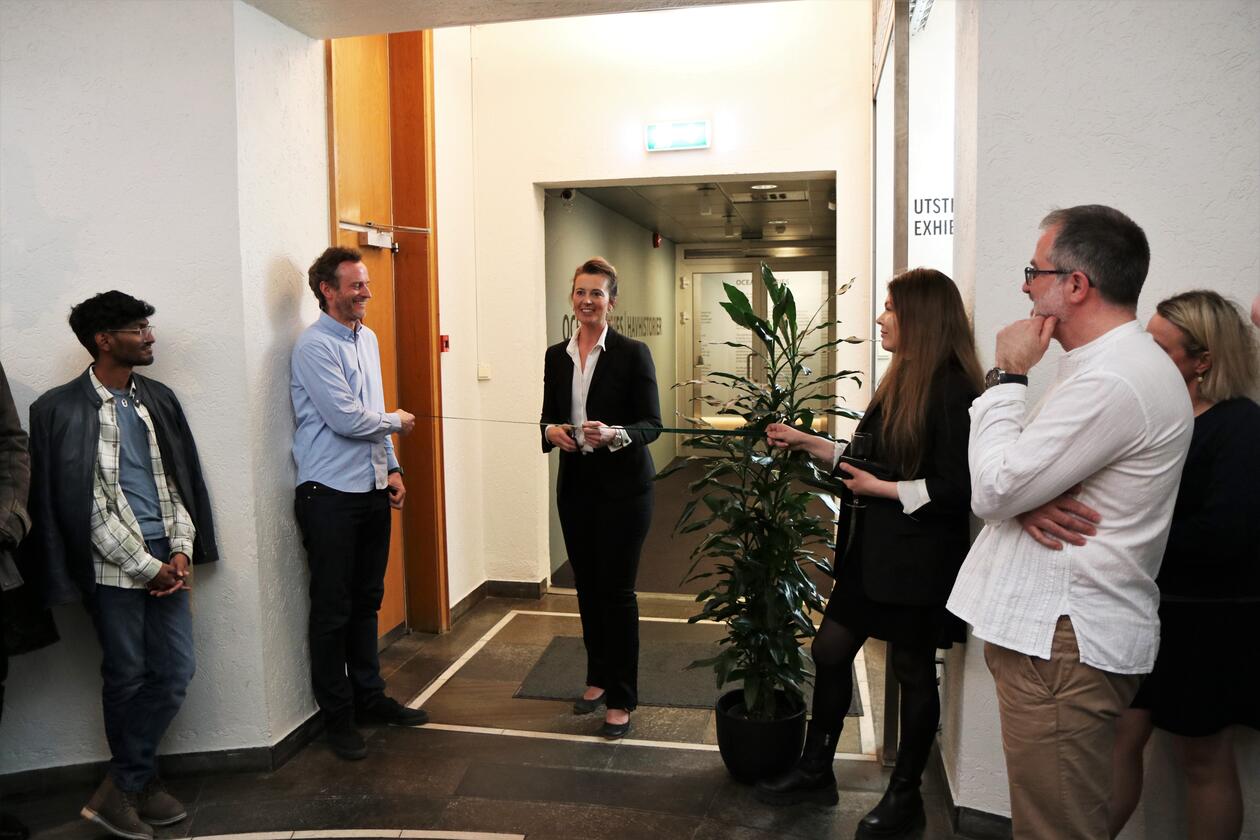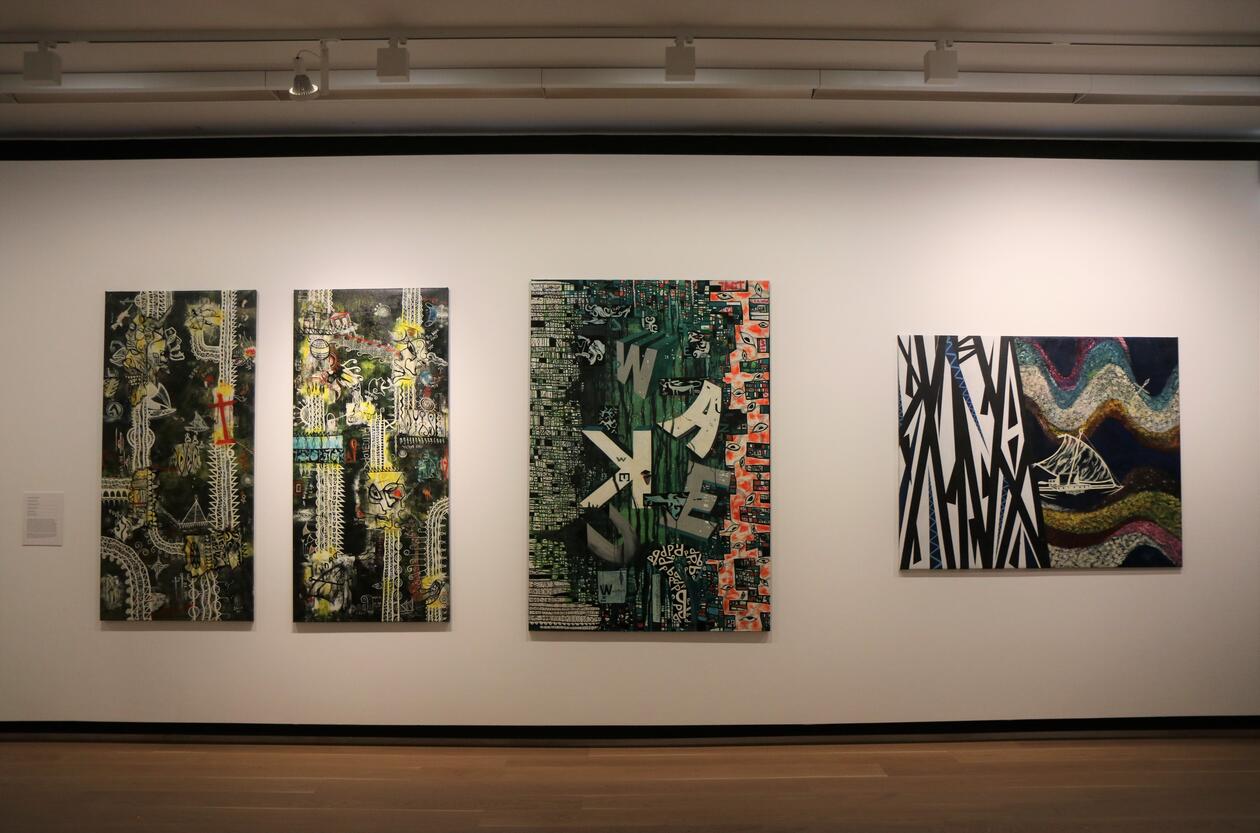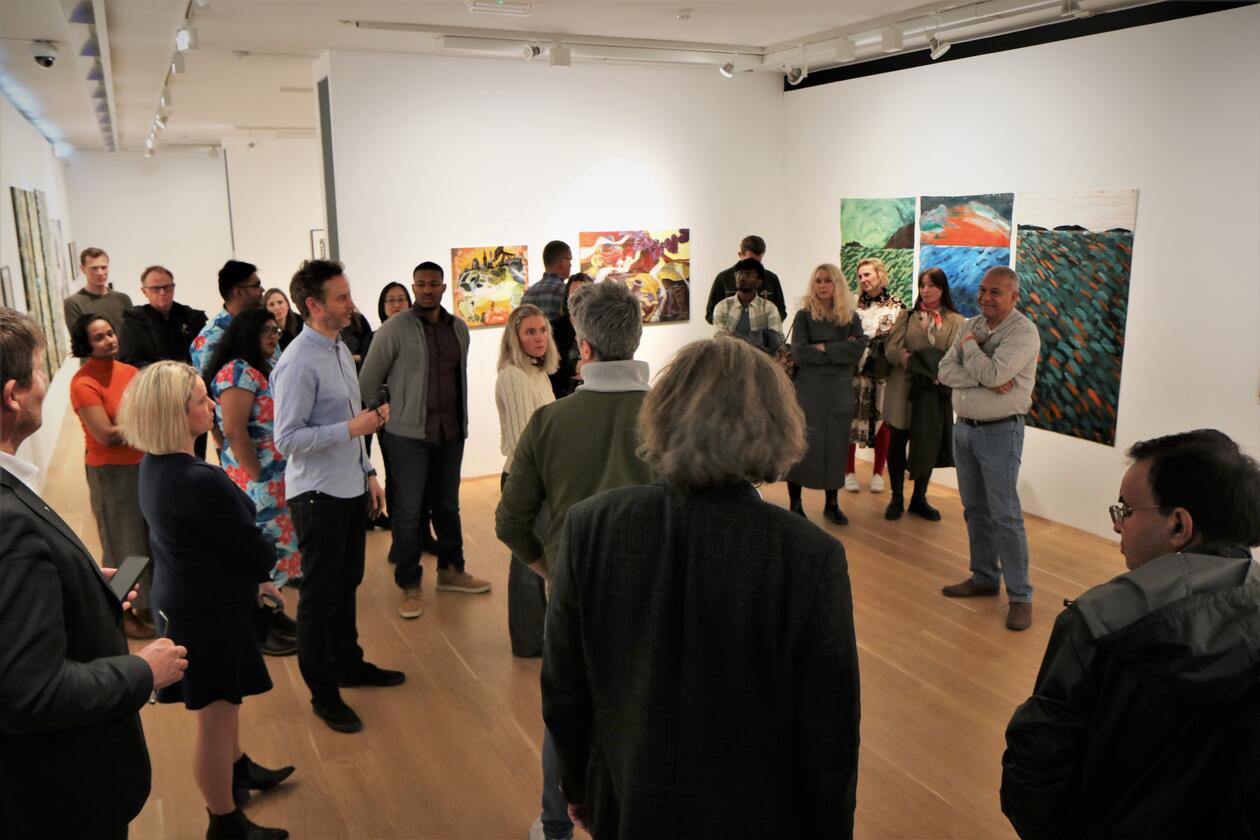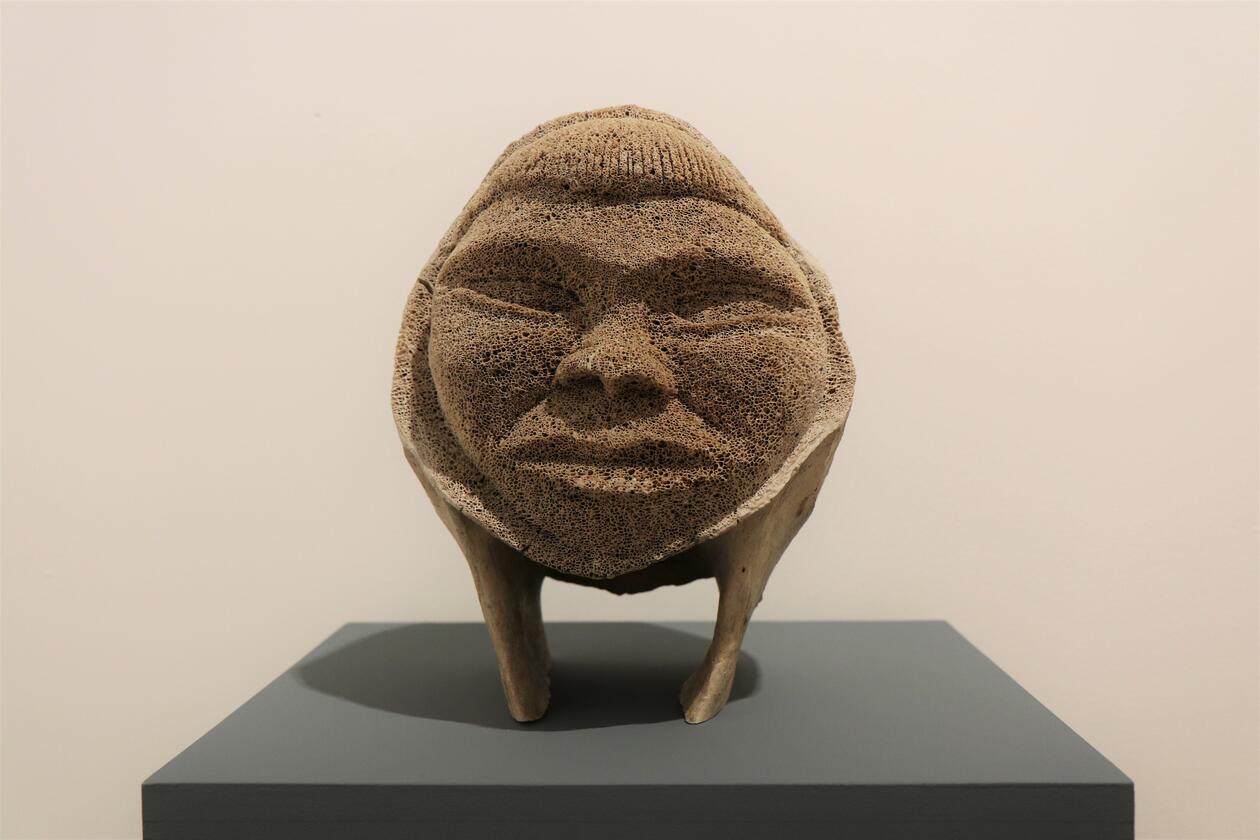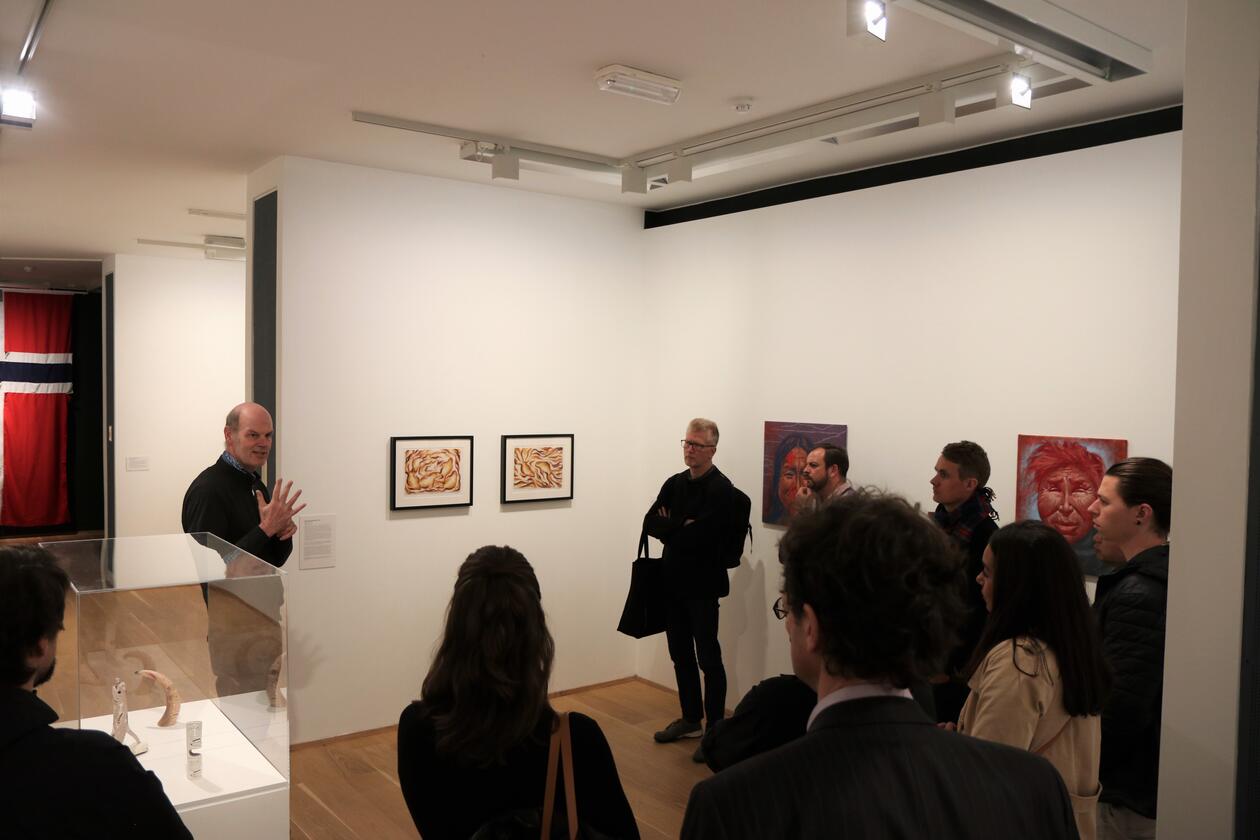Climate stories from Greenland to Fiji
The ice is melting in Greenland, revealing new areas of land. At the same time, areas of land on the tropical islands of the Pacific Ocean are being swallowed up as the sea level rises. An interdisciplinary project called ClimateNarratives will look at these connections and consequences and place the local population’s stories in focus.

Main content
The ClimateNarratives project at UiB is a large interdisciplinary project involving scientists and artists from the Faculty of Mathematics and Natural Sciences, the Faculty of Social Sciences, the Faculty of Fine Art, Music and Design and the Bjerknes Centre for Climate Research – as well as a large number of external partners. All of them are contributing their perspectives in order to understand how climate – and the understanding of climate – has affected people in very different parts of the world.
In close collaboration with local populations in Greenland and on islands of the Pacific Ocean, the group of scientists and artists will use the project to look at both challenges and opportunities facing some of the local communities most exposed to climate change and changes in sea level.
“Local establishment and collaboration is crucial for the project. It requires mutual trust and respect, as well as long-term presence and involvement in the communities of Ilulissat in Greenland and Fiji’s capital Suva”, says project leader and professor Kerim Hestnes Nisancioglu at the Department of Earth Science and the Bjerknes Centre for Climate Research.
Listen, learn, and share
In consultation with municipalities, fishery organisations, cultural institutions, schools and councils for the elderly, the research group has defined several important project questions. Collaboration is also a keyword with regard to fieldwork and collection of data, art and oral narratives.
“By collaborating on defining the research questions, as well as listening, learning and sharing throughout the project, we will ensure that our research is relevant to local communities. It is also important for us to make use of the vast amount of local knowledge that exists in both cultures”, says Nisancioglu.
Greenland and Fiji
In the ClimateNarratives project, the researchers will base their work on Ilulissat in western Greenland and Fiji in the Pacific Ocean.
The people in both places live by – and to a large extent off – the sea, and are linked by their proximity to nature. In addition, climate change brings both opportunities and challenges when new areas of land emerge in Greenland, while they disappear on the islands of the Pacific Ocean. According to Nisancioglu, this affects trade and industry such as fishing, hunting and tourism.
“The local communities have strong narrative traditions and a deep understanding of how climate and changes over time have affected their way of life. This knowledge plays a crucial role in the work of preparing society to deal with current and future climate change”, says the project leader.
Climate research
Nisancioglu says that the climate research in the project will lead to detailed sea level projections for low-lying islands of the Pacific Ocean, as well as estimates of how much and how fast the outlet glaciers in Greenland will retreat.
“We will also provide a better understanding of how the ecosystems and fisheries in the fjords along the coast of Greenland will be affected by climate change”, he adds.

Illu science and art hub in Ilulissat, Greenland.
The climate scientist says that the research team is already approaching an estimate of melting and sea level contributions from Sermeq Kujalleq (Jakobshavn Glacier) near Ilulissat, which contributes well over 10 percent of the total mass loss from the Greenland ice sheet.
“By 2024/2025, we will also have a good understanding of seasonal changes in sea ice off the coast of Ilulissat, and how this affects the ecosystems and coastal fisheries that are crucial for the local community”, he says.
Research infrastructure and local activities
An important point in the project is to contribute to the transfer and highlighting of knowledge from indigenous peoples regarding current changes in climate, and how these have been managed historically.
As part of the project, Illu science and art hub recently opened in Ilulissat. This building covers an area of 350 square meters and houses workshops and accommodation for scientists and artists, as well as a public section that will be used for exhibitions and activities for and with the local community.

ClimateNarratives includes fieldwork from scientists, artists, doctoral research fellows and students. Here are PhD-students Iliana and Linda and master’s student Dana in the field in Greenland.
“We have employed a Greenlandic project coordinator who will be responsible for keeping Illu open to the public with activities throughout the year. The building will also house 2-3 scientists and artists in a residency programme. In addition, we will use Illu as a starting point for fieldwork in the area”, says Nisancioglu, and adds that the project will also be able to use good facilities in Fiji.
“In Suva, Fiji, there is already similar infrastructure that we can use through our partner in the project, University of the South Pacific (USP). This includes The Oceania Center for the Arts, which is firmly established with the local population and offers a place for our artists and scientists to collaborate with local actors in Fiji.
“We have also established contact with local artist collectives, scientists and local communities in Fiji, as well as in the Solomon Islands and Cook Island. There, we will work to gather climate narratives and local knowledge about climate change in the past, as well as contribute with relevant knowledge about what we can expect in the years to come”, he says.
Dissemination
Dissemination and the transfer of knowledge is a key part of ClimateNarratives. This is where artists at the Faculty of Fine Art, Music and Design at the University of Bergen play an important role.
In Bergen, the general public was able to get an insight into this part of the project through the Ocean Stories art exhibition, at Lysverket on 14 April-7 May. The exhibition consisted of works by 28 artists from Greenland and Fiji, as well as Bergen. The exhibition was curated by Eamon O’Kane at the Faculty of Fine Art, Music and Design, who leads the artistic section of ClimateNarratives, Larry Thomas from USP and Andreas Hoffmann at Ilulissat Art Museum, Greenland.

Key scientists and artists in the project and for the exhibition: (from left) Kerim H. Nisancioglu, Skade Henriksen, Larry Thomas, Eamon O’Kane, Andreas Hoffmann and Edvard Hviding.
Through the project, one can also attend a series of discussions that span a period of 3 weeks at the House of Literature (Litteraturhuset) in Bergen in April and May. See more info at the ClimateNarratives website.
Another milestone in the project will be the official opening of Illu on 2 October, as well as exhibitions and workshops in the building throughout the summer and autumn. This takes place in collaboration with Avannaata Kommunia. The first workshop, with recycling and reuse as the topic, has already been held together with the schools in Ilulissat.
“By 2024, we will also have gathered narratives about climate change from multiple communities on the Solomon Islands, and will have completed exchanges of knowledge about local climate and climate change between the tropics and Greenland”, says Nisancioglu.
